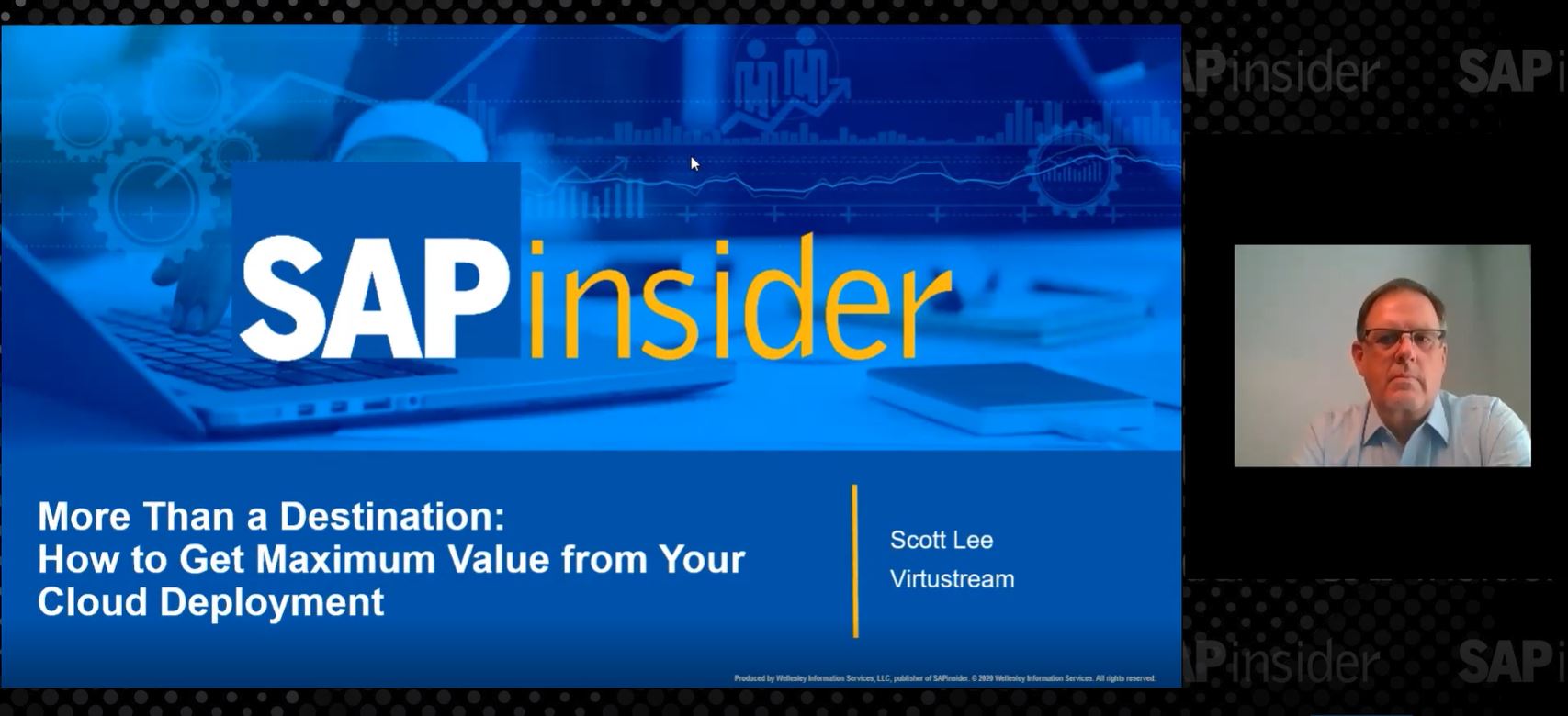Unsure How to Move to the Cloud?
3 Tips for Selecting a Partner You Can Trust
Companies have been automating business processes and leveraging their data in SAP systems for years, and have reaped the rewards. As time has passed, however, data has accumulated, and the business required more and more services. Companies often found themselves in an untenable position: Their technical needs for managing this growth in data and services — more servers, more systems, more staff, and more training — became too costly. This doesn’t work for today’s organizations: They need to run their business and rely on their systems, but can’t afford to continue to scale it to keep up with the increase in data and services.
This is why so many SAP customers are turning to the cloud. By using the cloud, you can have access to the latest and greatest services and technology, without having to provide time-consuming, costly training to existing staff, and without going through complicated, ongoing upgrades. Instead, you rely on a partner to host your systems in a private cloud, wherein the partner takes on the technical responsibility of running the system so you can focus on running your business.
Turning over the operation of your mission-critical SAP systems, however, is not to be taken lightly. You need high uptime, reliability, performance, and great support from a partner that you can trust. But how do you know which partners you can trust? With dozens of potential providers from which to choose, you need to review the services provided carefully. oXya has identified three key criteria to ensure that you have a great partner to help you on your journey to a hosted private cloud — and beyond.
1. Use Meaningful, Specific SLAs
SAP provides guidelines (EarlyWatch Alert thresholds) for specific service levels around a variety of measurements: response time, server uptime, backup frequency, and more. By adopting service levels that meet these guidelines into your service level agreements (SLAs), you can ensure your SAP landscape always runs at peak performance. Not all private cloud providers will use SLAs of this quality, so it is important to compare their offerings against SAP’s recommendations. Don’t settle for vague or general SLAs, such as 99.9% server uptime; these are meaningless. The server can be “up” but still perform so slowly that it makes users’ experiences miserable. An effective cloud provider should be able to offer, for example, an average response time of less than one second across all dialog steps in the system, as well as an average response time of less than a second for priority transactions. By focusing on response time rather than basic uptime, you can ensure that your business needs are met, not just that a box on a checklist is checked.
It’s not only about how to measure success, however. Consider incorporating penalties into SLAs in the event that a private cloud provider does not meet the expectations it has set for you. Partners that are confident in the services that they provide to customers should be willing to accept some level of recourse if something goes wrong — and by doing so, they demonstrate that you can trust them. The best partners would even offer these penalties themselves — without the customer even asking — because they’re confident in their services.
2. Demand Accurate, Timely Reporting
Even though you’re not managing your SAP system internally, you still need to know exactly what is happening in it. Establish a reporting schedule with your private cloud provider that specifies what type of information they will provide you, and how often. You should expect a partner to deliver daily status reports on the health of your systems that summarize the previous day’s activities, including incidents, syslog summaries, error messages, and escalations. A monthly, high-level summary of all SLAs and whether any were out of sync, as well as information on capacity planning for the size and growth of the database, would also be critical.
You may have additional reporting needs around job monitoring, SAP Business Warehouse (SAP BW) process chains, or business key indicators that are important for you. Discuss these needs with your provider and see if it can provide customized reports that best meet your needs.
3. Select the Right Delivery Model
There are many different ways of delivering a private cloud model, so you need to consider the specifics. For example, will the provider handle ongoing support, or will your in-house IT team carry that responsibility? If the provider delivers support, will it offer a dedicated team so the same team members handle all ongoing support? Or will there be new supporters each time, unfamiliar with your business and systems?
Many providers offer support teams working in silos of expertise, each one responsible for a specific area — such as Basis, databases, operating systems, or hardware. Often, these teams and team members are located all over the world. When you submit a ticket for, say, a slowdown in your production system, the call center you called would send the ticket to the Basis team. Someone from the Basis team calls you to get more details, and if the problem isn’t in their domain, they pass it along to the database team. If they don’t think the problem is theirs, they pass it along to the operating system team, then the hardware team, and so on. Meanwhile, your system is still running slowly, costing your business productivity, and resulting in lost time and money.
Instead, consider a partner that offers a more personal and integrated approach. Instead of separate teams for each potential technology issue, some providers use on-shore or near-shore teams with a range of skillsets. Each team is dedicated to specific customers, so the team members know the details of those customers’ environments and their needs. This approach usually leads to a significant reduction in the resolution process. More than that, it allows organizations to form a more personal relationship with their cloud provider, which ensures proactive and optimized service, tailored to your needs.

Finding the Right Cloud Partner
These three tips are only a sample of what you’ll need to consider when selecting a private cloud partner for your SAP environment, but they make a huge difference. oXya, a Hitachi Group company, provides a dedicated team for each SAP customer, SLAs that guarantee performance and accountability, and a reports system that provide customers with everything they need in a timely, efficient manner. We do it all with local teams in Jersey City, Denver, and Montreal that you can reach directly when you need them — and your assigned team knows the intricacies of your system and the business that it’s running (see Figure 1).
Running your systems in a hosted private cloud scenario is inherently a partnership, and ensuring the strength of that partnership is essential. For more information on finding the right cloud partner to solve your SAP challenges, email us at info-americas@oxya.com or visit oXya’s blog at bit.ly/1PPy75h.








